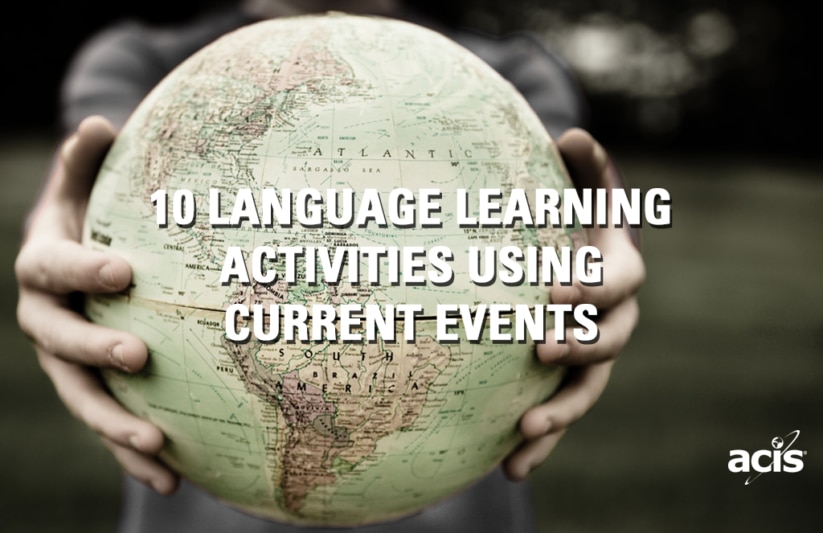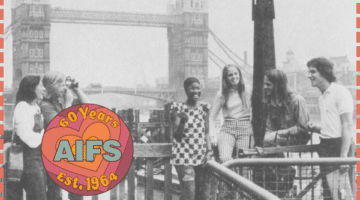10 Foreign Language Learning Activities Using Current Events

Language learning activities using current events are a fantastic way to show your students what they’re learning in your class has an impact in the outside world. Answering the questions, “Why are we learning this?” or “When are we going to use this?” can sometimes be challenging. Showing your students how big and multi-faceted the world can be is a great method for engendering passion and motivation for their study habits.
Here are 10 different language learning activities using current events you can do with your students in a foreign language (or in English for history teachers):
1. Caption Photos from the News
Writing captions for photos from the news can be an extremely revealing exercise. Assigning small groups of students the same picture to see the variance in their captions will be an interesting way for students to learn about the diverse perspectives their peers may have. It also causes students to look beneath the surface to take a closer look at a subject as well as to think analytically and critically about what they’re seeing.
2. Hold a Debate
Pick an issue and assign your students one side or the other. Having them adopt a view that’s popular in the country which you’re studying will be a great way to teach them about the national political landscape as well as allow them to empathize with someone who may have an opposing view to theirs. Formulating, articulating and defending their opinions will be a fantastic way for them to apply their language skills.
3. Summarize an Article Using the 5 W’s
A great way to work on reading comprehension is to take an article from a foreign language news outlet and have your students identify the 5 W’s: Who, What, When, Where, and Why. If you’re looking for good places to find foreign language articles here’s a small list: Spanish – El Diario, La Opinion, El Pais; French – Le Monde, Charlie Hebdo, Le Canard Enchaine; German – Der Speigel, Die Zeit, Die Welt; Chinese – Huanqiu.
4. Make a News Broadcast/Podcast
Students can find articles in either English or their foreign language of study and summarize them into a newscast which they could record in video or audio format. They could divide the report into the facts and then also deliver their opinion on the matters at hand. They could discuss the historical or cultural significance of what is happening as well as the relevance to people in the United States.
5. Hold a Mock Campaign and Election
During election years, students can get into the political season by researching and impersonating political figures. They can run campaigns, pick a slogan, design political campaign artwork, write stump speeches and of course, they can hold debates amongst the different political candidates. This is another fantastic way to shine a spotlight on the national culture of a given country providing insight into what social and political trends are prevalent.
6. Create a News-Inspired Theatrical Performance
If you’ve ever watched an episode of Law and Order, then you know current events are a rich source for dramatic plot-lines. Students can use news articles or videos as inspiration for theatrical performances. They could script a short scene that touches on a given issue either showing the impact a political topic has on the general population. They’ll be able to use their language as well as their drama skills.
7. Interpret Political Cartoons
Political cartoons are a fantastic medium for foreign language study. The French satirical magazine Charlie Hebdo has become famous over the years for their commentary on world trends as identified through their political artwork. Assign groups of students different pieces of art so that they can write about or speak to the issue on which the art is commenting in the form of an essay or presentation.
8. Illustrate the News
A fun way for students to work on their reading comprehension skills, they could read an article from a foreign language news outlet and create an image that encapsulates the story. They could either draw it by hand or use digital illustration tools to compose an image that tells the story being told in the article. It could be in the style of a political cartoon or it could be a true-to-life portrayal of reality.
9. Making Connections – Comparing International Affairs to Domestic
One of the best things about studying foreign cultures–it forces us to realize how much we have in common. Whether it’s comparing and contrasting political movements, environmental issues or economic trends, there’s usually an interesting comparison to be drawn between what’s happening at home and abroad. Encouraging your students to make connections between the issues that affect them and their families with those across the globe can be a powerful exercise in cultural awareness.
10. Historical Perspective – Finding Events in the Past that Connect to the Present Day
As the adage originally coined by George Santayana goes, “Those who cannot remember the past are condemned to repeat it.” Drawing comparisons to what has preceded us with what’s happening now is an informative exercise that helps the study of pretty much any subject matter. With the rich history that different parts of the world have from which to draw, there are endless opportunities for learning and shaping modern perspectives.
How do you use current events in your classroom? Let us know in the comments section below!










